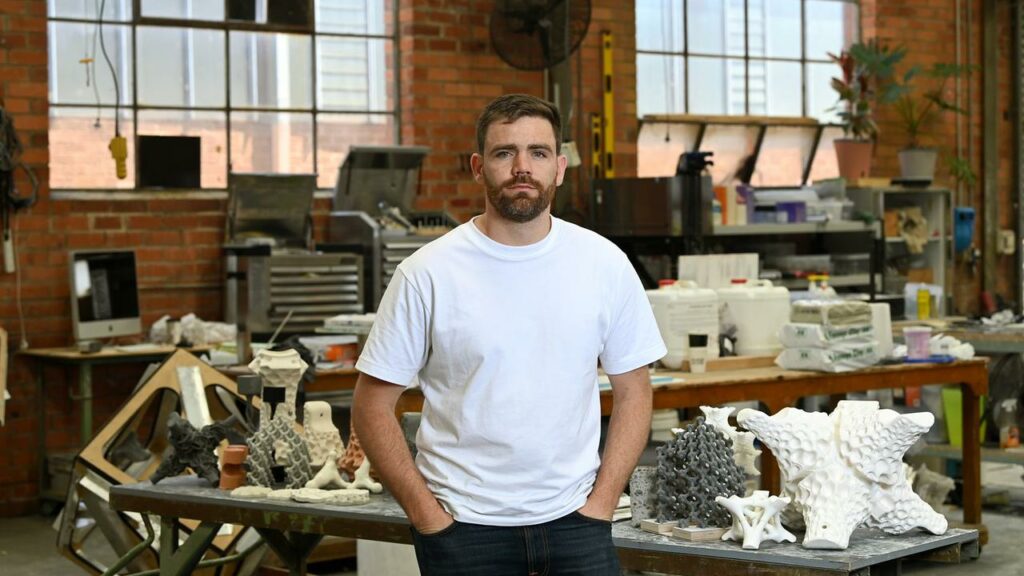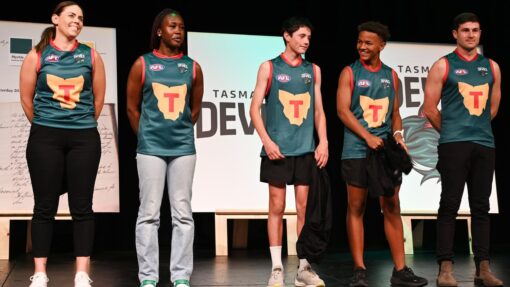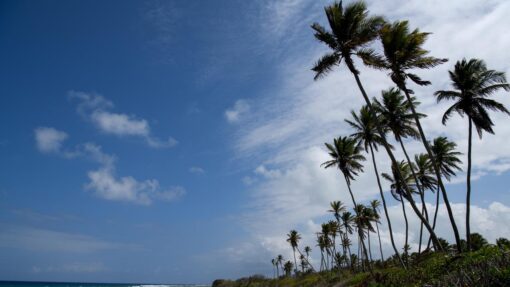Designer 3D-prints spare parts for the sea
Tracey Ferrier |

On a sleek, low plinth in the National Gallery of Victoria, Alex Goad’s artificial reef structure looks perfectly at home beside other modernist installations.
The archway of interconnected modules, made with the help of 3D-printers, is part of an exhibit featuring creative professionals who fuse design, technology, and science to imagine the future.
It’s visually pleasing in luminous white. The bumpy, lattice-like construction is highly tactile and tall enough for visitors to experience from the inside, like a sheltering fish.
About 9000km away, in the Maldives, clusters of the same modules sit on the sea floor off Summer Island.
The naked building blocks were quickly assembled by divers about three years ago but these days are covered in coral, sponges and algae and double as a protective home for tropical marine species.
Coral fragments that were implanted onto the structure are now mature and have been joined by a bunch of natural recruits.
It’s a satisfying proof-of-concept for Goad, an industrial designer who seems to sit somewhere between artist, inventor, environmentalist and lover of science.
His high-tech lab in a Melbourne warehouse is equipped with banks of 3-D printers that bring his marine recovery aids to life.
The modular artificial reef system (MARS), used in the Maldives and designed with cost efficiency and easy installation in mind, is just one. MARS hasn’t yet been used in Australia but another Goad invention is not hard to find in Sydney.
At harbourside Rushcutters Bay and Milsons Point beneath the bridge, at Balmain and Barangaroo, flat harbour walls have been fitted with panels he designed for the Sydney Institute of Marine Science’s (SIMS) Living Seawall program.
The visual effect is one of a three-dimensional mosaic on the water line – a piece of public art that appears and disappears with the shifting tide.
But the panels are science in action, transforming man-made structures hostile to biodiversity into complex grooved and dimpled habitat for anything that wants to take hold.
A layer of algae usually comes first, followed by small shellfish and seaweed. Eventually larger life forms settle. Much depends on the conditions at each site, but in some harbour locations encrusting layers of oysters have formed.
And SIMS scientists have reported an increase of up to 36 per cent in fish, seaweed and invertebrate numbers in areas with Living Seawalls.
It’s the science that matters most to Goad.
It underpins every design that emerges from his warehouse. Typically the process involves an intensive period of designing and then tweaking, in consultation with marine ecologists.
The prototypes are 3D-printed, refined some more, and finally when a product is ready, it’s produced with traditional concrete or ceramic casting techniques, to save on time and costs.
“In these highly degraded, completely changed unnatural environments, we are using these tools and methodologies to try and get back a kind of hybrid between what naturally would grow, and what we have to implement, as human-made structure, to try to improve the ecology,” Goad says.
“But if we are going to be proposing these new and ecologically designed structures, we need to know they work and that they’re not going to be a haven for invasive species, or example.
“That’s why the collaboration with researchers is so important.”
But Goad says it’s also paramount to imagine and make tools that have regard for beauty, objects that spark curiosity, invite questions, and inspire conversations about what humans can do in the future to support a degraded planet.
He’s grateful that some of his work has made it into the permanent collection at the Museum of Modern Art in New York, and is regularly displayed in museums and galleries at home and overseas.
“I do think a big part of this work is communication so we can start to influence change, different ways of doing things,” he says.
“And a great way to do that is through culture, to engage with museums. It’s one of the best communication tools you could have.
“This work is definitely part of a greater conversation that’s happening at the moment about how we’re going to be building in the future, and how we can start to build differently.”
Goad’s work will be on display at the National Gallery of Victoria until February 6, as part of the Sampling the Future exhibition.
AAP


